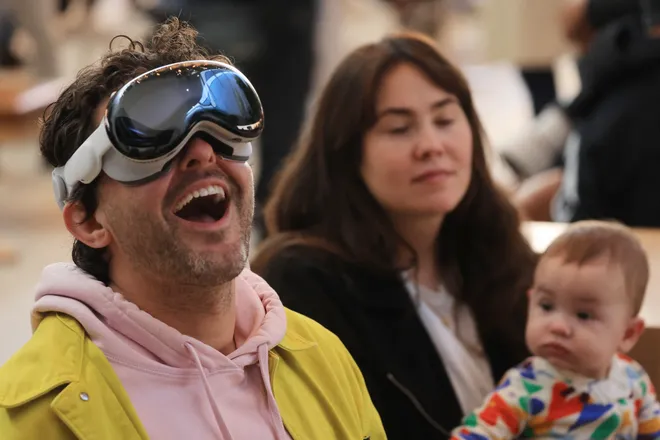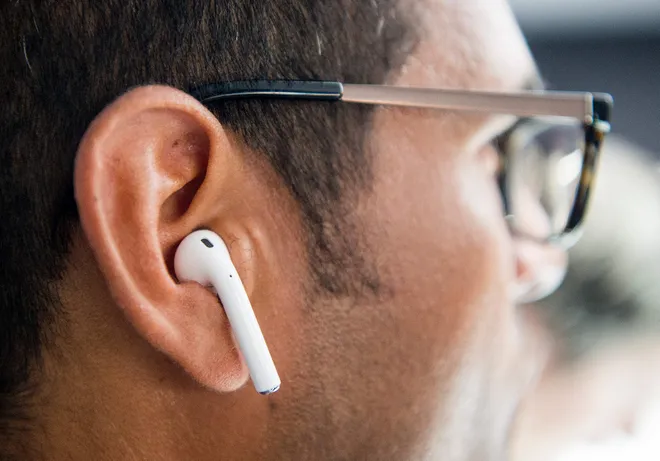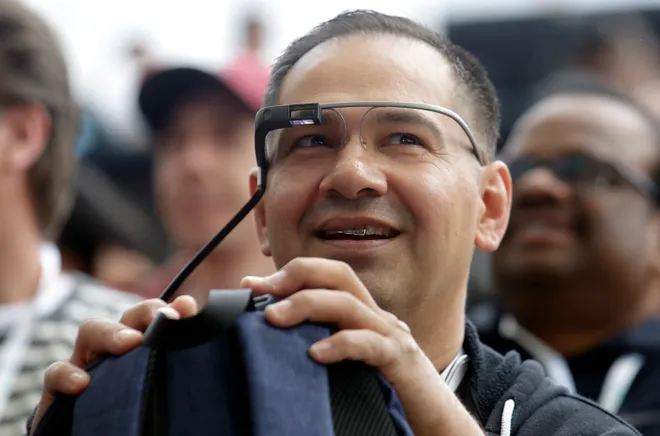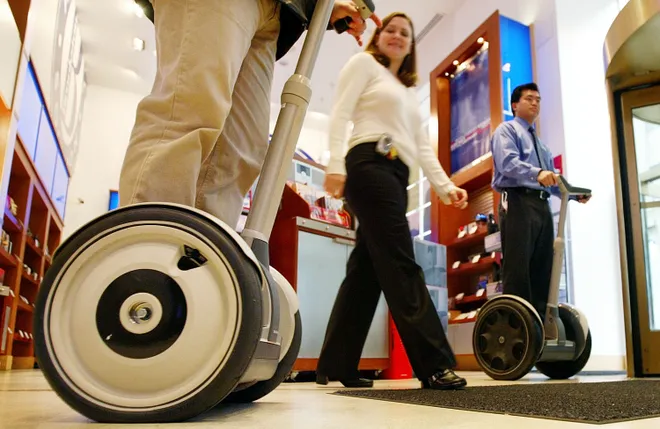People mocked AirPods and marveled at Segways, where will Apple's Vision Pro end up?
Sights of Apple Vision Pro customers wearing the imposing devices on their heads have sparked initial reactions of confusion, amusement and even outright irritation across social media.
After the product's launch last week, platforms like X and TikTok were flooded with videos of people spotted wearing the giant goggles at the gym, on the subway and in the streets – prompting many to speculate that a science fiction dystopian future is not far away.
But are reactions to Apple's $3,499 mixed reality devices all that different to responses to other emerging technologies in recent years?
Research shows that many Americans value owning hot new tech products, with an August consumer survey from LendingTree finding that 77% of respondents say it’s important for them to have the latest gadgets. Despite those findings, it's not uncommon for many new products like the Vision Pro to receive a cold reception – at least at first.
Products like AirPods and cell phones that were once treated with skepticism or even outright mockery are now a ubiquitous part of our daily lives. Others, like Google Glass, simply never caught on.
Learn more: Best credit cards of 2023
Here's a look at five products that initially caused puzzlement and even annoyance upon their release, along with how they have since fared.

'The Simpsons' did it?Did the classic animated series predict Apple's Vision Pro? Product is eerily similar to fictional device
AirPods

Initial reception: It may be hard to remember a time when people listened to music or talked on the phone with anything other than wireless Bluetooth headphones.
But the world to which Apple AirPods were introduced in 2016 was hardly welcoming. Reviews were critical of the tech product, while the general public met its launch with widespread ridicule.
"AirPods feel very much like a first draft … I cannot get them to stay in my ears for long periods of time," the Verge wrote in a review at the time of release.
In an even less-kind review, the Guardian compared the earbuds to a "tampon without a string."
AirPods also became a source of mockery across the internet, with some users joking about the ease with which they will be lost and others comparing their appearance to everything from electric toothbrush heads to blow dryers.
What happened: AirPods have proven to be a lucrative commodity for Apple, which has seen the earbuds only grow in popularity as the years go by.
AirPods reportedly brought in $14.5 billion in revenue in 2022, technology news site Techweez reported in August, citing data from the Securities and Exchange Commission (SEC.) The figure is a sign that product is only becoming more popular six years after its release after making $12.1 billion in revenue for Apple in 2021.
Google Glass

Initial reception: Not all things are destined to survive the sands of time.
Take Google Glass, a device that in many ways was a precursor to Vision Pro: the product was mocked upon its release in 2013 and then ... just faded into seeming obscurity.
Inconsiderate users of the product – wearable computers mounted on eyeglass frames – became known as "Glassholes" and were banned from bars and ostracized in public amid privacy concerns.
Some optimism did exist that Google Glass devices could potentially usher in the future of journalism, but it was not meant to be.
What happened: Despite efforts in 2014 to revamp the product with new frames to make them less techy-looking, Google Glass was discontinued in 2015 due to its limited appeal.
Google attempted a comeback in 2017 with improved functionality for the product. However, amid a market already becoming flooded with augmented and virtual reality products, the glasses never became a part of most Americans' daily lives.
Segway
Initial reception: After months of hype, Segways rolled out in 2001 with their two-wheeled, all-electric, self-balancing designs.
Amazon founder Jeff Bezos and venture capitalist John Doerr were early investors in what was billed as a method of transportation so groundbreaking, that even Apple co-founder Steve Jobs predicted cities would be redesigned around the device, CNET reported at the time.
The Segway's inventor Dean Kamen was no less bold in his own prognostications, telling Time magazine that the vehicle would “be to the car what the car was to the horse and buggy.”

What happened: Needless to say, it didn't quite work out that way.
Because of their ability to sense and respond to the slightest shifts in your balance, the machines may have been fun enough to ride – but may not have been worth the $5,000 price of ownership. By the time Segways fell out of production in 2020, just 140,000 units had been sold, Fast Company reported.
But the scooters still do have their uses: Segways are still a popular mode of transportation for a variety of city tours, while "Paul Blart: Mall Cop" made light of their infamous use by mall security.
Credit cards
Initial reception: It's hard to remember a time when credit cards weren't the primary means of paying for purchases.
But in the 1990s, cash was king, as was evidence in a news report unearthed last year that shows Burger King customers apprehensive about the new form of payment.
TikTok user @noesox was the first to share the viral clip of a news report from 1993 about Burger King’s decision to start accepting credit cards.
"I think it's pretty bad if you have to use a credit card when you go to a fast food restaurant," one woman at Burger King told the reporter.
"I just hope it doesn't slow things down," said another customer.
"I'm sure it'll work for people on vacation," yet another man said. "But I can't imagine it working on a day-to-day basis."
What happened: If you make a habit of carrying cash in your wallet or purse these days, you're among an ever-shrinking group, Pew Research has found. And the fact that you most likely have not one, but multiple credit cards in your name is evidence of how the hand-wringing over the payment method turned out.
The internet
Initial reception: Yes, even something as omnipresent as the internet was once a new and perplexing invention.
In 2019, the Today Show unearthed a clip from 1994 in which anchors Katie Couric, Elizabeth Vargas and Bryant Gumble expressed confusion about the internet, as well as email.
"What is internet anyway?" a bemused Gumble asked in the segment, which was also referenced in a 2015 Super Bowl ad.
Humorous with the benefit of hindsight, the anchors' collective confusion was not unlike many Americans who at the time were just trying to figure out whether the internet would have any utility in their lives.
What happened: Considering the medium in which you're reading this article, I think it's safe to say the internet wasn't exactly a mere fad.
Eric Lagatta covers breaking and trending news for USA TODAY. Reach him at elagatta@gannett.com

Disclaimer: The copyright of this article belongs to the original author. Reposting this article is solely for the purpose of information dissemination and does not constitute any investment advice. If there is any infringement, please contact us immediately. We will make corrections or deletions as necessary. Thank you.







